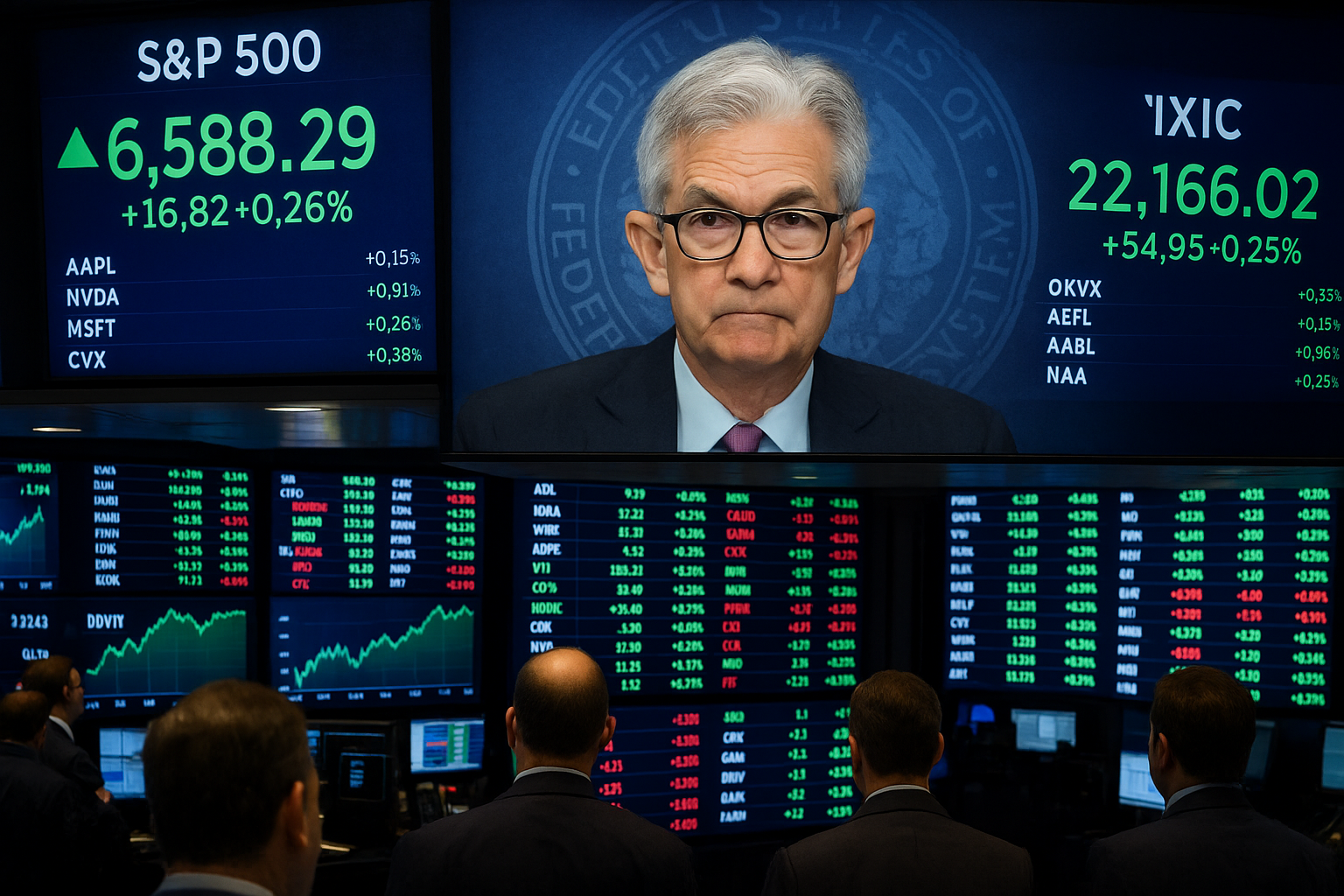The Federal Reserve enters a pivotal week with markets on edge. Investors expect a 25-basis-point cut, with futures markets showing odds above 90%. Yet the choice is not simple. Inflation remains stubborn, fueled by tariffs and rising costs in food, vehicles, and services. At the same time, jobless claims have climbed to their highest level in nearly four years, while payroll growth slowed sharply. The FED’s dual mandate—price stability and full employment—has rarely been this difficult to balance. Chair Jerome Powell must weigh whether cutting too slowly risks a deeper labor downturn, or whether moving too fast risks reigniting inflation.
Wall Street Bets on the FED Pivot
Despite the cloudy economic picture, Wall Street remains bullish. The S&P 500 and Nasdaq notched their best weekly gains since August, while the Dow climbed back after weeks of declines. Treasury yields drifted lower, and gold surged to fresh highs as traders braced for the central bank’s move. Strategists at Deutsche Bank, Wells Fargo, Barclays, and Yardeni Research all boosted their S&P 500 targets, citing earnings resilience and relentless AI-driven growth. Wells Fargo even argued that “froth” in stocks is not yet a reason to exit, as long as AI capital spending holds steady. Wall Street sees the FED’s cut not as a warning sign, but as fuel for the next leg of the rally.
Weak Labor Market Pressures the FED
Fresh data shows the labor market is weakening faster than many expected. Weekly jobless claims rose to 263,000, the highest level in almost four years. Government revisions also revealed that nearly one million fewer jobs were created between April 2024 and March 2025 than initially reported. Payrolls in August grew by only 22,000, highlighting the slowdown. Economists call this “the worst kind of setup” for the FED—cutting not because inflation is under control, but because jobs are deteriorating. Claudia Sahm, a former FED economist, noted that the cut would be driven by bad news on employment, not progress on prices. This dynamic could shape not only Wednesday’s decision but also the pace of future rate moves.
Wall Street’s AI Momentum Keeps the Bull Alive
Amid labor worries, Wall Street finds strength in technology. Oracle shocked markets with projections that its AI-driven cloud revenue could soar to $144 billion by 2030. The Nasdaq crossed 22,000 for the first time, while the S&P 500 and Dow both touched record highs. UBS Global Wealth Management expects stocks to climb further, setting a 2025 S&P 500 target of 6,600 and projecting 6,800 by mid-2026. Analysts argue that robust earnings in tech offset the risks of slowing growth. The FED’s decision may slow parts of the economy, but Wall Street believes AI will keep the bull market intact. As one strategist put it: the music stops only when AI capital spending does.
What’s Next for FED and Wall Street
Markets will closely watch the FED’s “dot plot” this week for clues on how many cuts lie ahead. Investors currently price in three cuts by year-end, though some economists caution that sticky inflation may prevent such an aggressive path. Retail sales, jobless claims, and manufacturing data will add more signals for policymakers. Beyond the FED, earnings from FedEx and homebuilders could offer insight into trade and housing demand. For now, Wall Street seems confident. Stocks sit at records, optimism over AI is high, and investors expect the FED to deliver. The only question is whether Powell can navigate a soft landing—or whether the rally is running ahead of reality.
